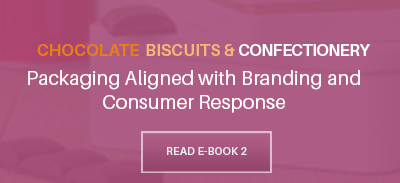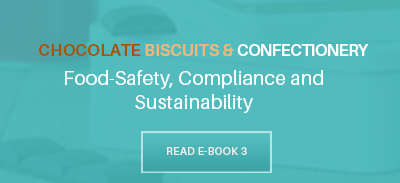Shipping chocolate, biscuits and confectionery requires preserving fresh taste in order to win customer satisfaction. One of the most important factors is temperature because if the food gets too hot it will melt and if it gets too cold it can cause discoloration. Here are important points to remember when deciding on containers for perishable foods.
Properties of Chocolate
Chocolate does not mix well with moisture or liquid, which is why it needs to be kept in a dry place. It begins to melt at about 88 degrees F and burns at 125 degrees F. The ideal temperature for storing solid chocolate is between 50 and 70 degrees with under 50 percent humidity. Another property of chocolate is that it absorbs odors, which is why it must be well insulated. Chocolate depends on freshness to maintain its powerful taste.
Important environmental factors that can damage chocolate include light and air. Oxygen and light cause chocolate to oxidize as it alters the flavor. Dark chocolate, however, has higher levels of antioxidants so it isn't affected as much. Ultimately, the crucial elements of packaging chocolate are airtight conditions and preventing light from entering the package.
If chocolate is exposed to air it will become spoiled and unmarketable. The more the package can protect against oxidation, the more it will extend the shelf life of the product. Similarly, when chocolate is exposed to light the food will get damaged and develop white spots and cannot be sold.
 Why Perishable Items Must Have Layers
Why Perishable Items Must Have Layers
Food items such as chocolate, biscuits and confectionery are commonly packaged in layers to protect the food from exposure to environmental elements. The packaging must be strong enough to prevent insects from gaining access and it must protect against extreme temperatures. The candy must be wrapped and then further protected with other packaging.
Layers can come in different forms, such as pouch bags, which provide extra protection against moisture. Protective foil is useful for keeping food separate from ultraviolet rays. Chocolate attracts insects, which can sometimes penetrate plastic pouches. The inner layer, which is often made of aluminum foil or coated paper, helps protect the flavor. Many times the outer layer is simply cardboard. In recent years the packaging industry has been working on improving packages designed to protect against heat.
Food must also be protected from shock and vibration in the distribution process. Physical barriers with corrugated materials can add a further layer of protection of delicate foods.
Heat-Resistant Packaging
For many years the packaging industry has developed insulated packaging for confectionery. The current solution for chocolate is still aluminum foil, which is useful because it can take the shape of any food and can be made into thin sheets. Since foil is available in various thicknesses, it's a convenient choice for packaging a wide variety of food products. Aluminum provides a more efficient barrier against environmental elements than most other typical packaging materials.
 Materials chosen for food packaging must be evaluated based on chemical, biological and physical processes. Glass and different types of metal work as chemical barriers. Plastic also provides sufficient separation but is not always appropriate for certain levels of permeability. Metalized film, which is more flexible than laminated film, has proven to be an effective solution for packaging snacks.
Materials chosen for food packaging must be evaluated based on chemical, biological and physical processes. Glass and different types of metal work as chemical barriers. Plastic also provides sufficient separation but is not always appropriate for certain levels of permeability. Metalized film, which is more flexible than laminated film, has proven to be an effective solution for packaging snacks.
Tinplate is another useful solution that works as a barrier to gases, water, vapor and light. Since it is both lightweight and strong material, tinplate works well for shipping and storing. It even costs less than aluminum.
Plastic has many uses for food packaging, particularly thermoplastics, which can be shaped and molded for unique packaging. One of the main reasons plastics are widely used in food packaging is lower cost. But plastic has a bad environmental balance, both with respect to CO2 as well as the limited recyclability.
 The reason paper is not used as much is that it's not heat sealable. When used in contact with food, paper is always treated or coated with other materials such as wax.
The reason paper is not used as much is that it's not heat sealable. When used in contact with food, paper is always treated or coated with other materials such as wax.
Even though the packaging process has been refined over the past century, it will likely face various new laws in the next decade due to sustainability issues. Ultimately, the packaging industry continues to move toward the most efficient solutions.






